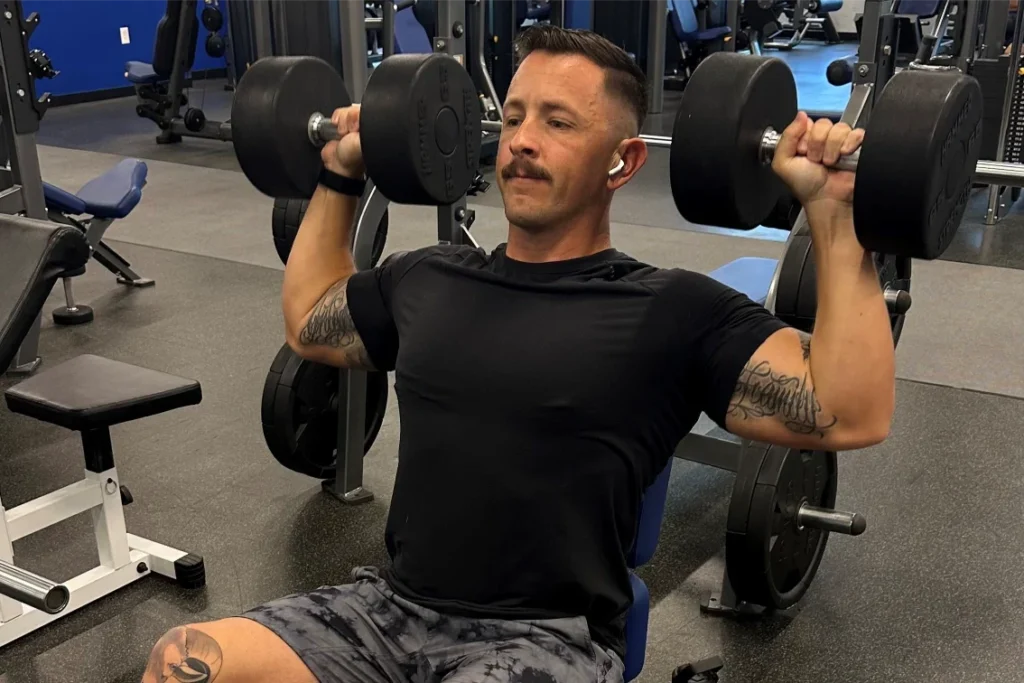Breathing may seem like a natural process you don’t need to focus on, especially when lifting weights, but mastering proper breathing techniques can significantly enhance your performance and safety during workouts. Most lifters are primarily concerned with form and the amount of weight they can handle, often overlooking the critical aspect of how they breathe. Yet, the way you breathe can impact your strength, endurance, and even your muscle growth. This guide will explore the essentials of effective breathing while lifting weights, providing you with the knowledge to power through your sessions more effectively and safely.
The science of breathing
When you breathe, oxygen enters your lungs and is transported to your muscles via the bloodstream. This oxygen is crucial for producing the energy needed in muscle contractions during weightlifting. On the flip side, breathing also involves the expulsion of carbon dioxide, a waste product generated by these muscle contractions.
During intense workouts, your breathing rate naturally increases to match the oxygen demand of your muscles. Efficient breathing ensures that your body maintains optimal oxygen levels, which helps delay the onset of muscle fatigue and allows for a longer, more productive workout session. Additionally, proper breathing helps maintain intra-abdominal pressure, which is vital for stabilizing the core and protecting the spine during heavy lifts.
Core breathing techniques
Here are some of the core methods:
Diaphragmatic breathing (Belly breathing)
Diaphragmatic breathing involves deep breathing through the diaphragm, allowing for maximum oxygen intake and helping to maintain calm and focus. To practice this technique:
- Lie on your back with your knees slightly bent.
- Place one hand on your chest and the other on your belly.
- Breathe in deeply through your nose, ensuring your belly rises more than your chest.
- Exhale slowly through your mouth or nose, contracting your abdominal muscles to push all the air out.
This method is particularly useful during the rest periods between sets as it helps to control the heart rate and prepare the body for the next set.
Rhythmic breathing
This technique involves synchronizing your breath with your movements, which can help improve performance and prevent injuries. For example:
- Inhale during the less strenuous phase of the lift (eccentric phase or “putting down” the weight).
- Exhale during the strenuous phase (concentric phase or “lifting” the weight).
Rhythmic breathing not only helps in maintaining a steady flow of oxygen but also assists in keeping movements controlled and precise.
The Valsalva maneuver
The Valsalva maneuver is an advanced breathing technique used during heavy lifts to increase core stability and spinal support. To perform it:
- Take a deep breath and hold it right before lifting.
- Perform the lift while holding your breath.
- Exhale forcefully once the lift is completed.
This technique creates significant intra-abdominal pressure, which acts like a brace to protect your spine during heavy lifts. However, it should be used with caution, especially for those with cardiovascular issues, as it can dramatically increase heart rate and blood pressure.
Breathing is important regardless of the type of exercise you do. Stationary bike training, that’s great for cardio, depends heavily on proper breathing too.
Final thoughts
Mastering the art of breathing correctly while lifting weights is more than just a technique—it’s a transformative tool that enhances every aspect of your training. From increasing your strength and stamina to ensuring the safety and longevity of your workout regimen, the benefits of proper breathing are profound and far-reaching. With proper breathing, you’d be able to determine your limits in terms of weight you can or can’t lift. And to learn more about those limits, read this article about how much weight to lift for optimal training.
If you’re eager to take your workouts to the next level or if you find yourself needing a bit more guidance on how to apply these breathing techniques effectively during your weightlifting sessions, consider visiting HiTone Fitness Morganton.





